- Home
- Elif Shafak
The Flea Palace Page 2
The Flea Palace Read online
Page 2
That would not last long. An incessant wave of migrations cluttered up the city with buildings marshalled in tandem like the soldiers of a sinister army, each and every one looking much alike from a distance. Amidst the muddled waters of ‘citification’ surrounding them in all directions, the cemeteries remained intact like two uninhabited islands. As new high-rises and rows of houses were built continuously, around them up popped small, sporadic, circumscribed streets resembling from far above the veins of a brain. Streets cut in front of houses and houses blocked streets; the whole neighbourhood swelled, bloating like a foolhardy fish unable to feel satiated even when beyond being full. Finally when just about to burst, it became inevitable that an incision must be made and an opening created on the stretched tight node so as to relieve the pressure mounting from within. That incision in turn meant a new road had to be built before too long.
Due to this unforeseen, unstoppable growth, all the streets in the vicinity had become wedged at the edges like water with nowhere to go. An avenue, by linking them all into a single channel, could make them re-flow.
Yet, when the time came for the authorities to take a birds’ eye view to decide where and how to build this avenue, they realized an onerous quandary awaited them. At all the possible sites where such an avenue could be constructed, there was, as if by design, either a government building or the property of the local gentry and if not those, the jam-packed low-income shanty-houses that could be effortlessly taken down one by one but were not that easy to erase when there were so many. In order to be able to build the road that would open the way, they would first have to open the way for a road.
Istanbul being a city where houses were not built in accordance with road plans but road plans made so as not to upset the location of the houses, the construction of the new road required tearing down as few houses as possible. Given this precondition there remained only one option: making the road pass through the hilly terrain of the two cemeteries.
Once the reports detailing this plan had been approved by the authorities, it was decided that within two and a half months the two cemeteries should be removed and the hilly terrain flattened out. Those who had loved ones in these cemeteries need not worry, they said. After all, the tombs could be moved in their entirety to various spots around the city. Muslim tombs could be transported to the slopes overlooking the Golden Horn, for instance, and the non-Muslims to their own graveyards in various other quarters.
Most of the tombs were so ancient that along with their occupants, their descendants had also changed worlds by now. There were also those that, despite having descendants still above the ground, might yet go unclaimed. In spite of all this, the number of people snooping into the fate of the tombs turned out to be far more than the authorities had initially expected. Among them, some relatives simply wanted their dead to be left alone while others discovered the proposed alternate graveyards were already crammed full. Both of these groups had instantly started to search for ways to reverse the decision. Still, the majority of the relatives acquiesced to do whatever was deemed necessary and to this end set off to shoulder the burden.
In the following days the Muslim cemetery played host at all hours of the day to all kinds of visitors, each singing a different tune. The task of hiding the traces of the nocturnal visitors from those paying homage in the daytime fell upon the cemetery guards who at dawn gathered the spilled bones and closed over the tombs dug up during the night. Then, towards noon, the authorities showed up to inspect the guards, and in the afternoon, families worried about their dead getting mixed up with other people’s dropped-by in large crowds, all the while talking and complaining, if not to the tombstones, to one another.
Until the cemetery was officially forbidden to accept visitors, the old and middle-aged women of these families were there almost every single day. When tired of standing up, they would line up with their blankets spread right there around their relatives’ tombs. Once seated, they would either weep alone or pray together, clutching their children tightly to force them into reverential silence. Then time would drift by, the air getting heavier, some children would fall asleep while others escaped to play; and a cloud of languor would daintily follow, forming a canopy over the women on the ground. ‘The descent of the spiritual,’ this can be called. After all, even the most otherworldly cannot remain oblivious to the forces of gravity pulling them down to earth. In this state the women would make it through to the night. Rooting about in their long tattered bags, bought who knows when and mutated over time into the same grimy tone of brown, they would fish out aniseed crackers, pour tea from thermoses while at the same time circulating lemon cologne to wipe both their sweaty faces and the reddish skin marks around their knees left by knee-high nylon socks that, no matter which size you chose, were always too tight. Next they would peruse the pages of the notebooks of the past, recalling one by one the names of all those who had made life living-hell for the dearly departed. Once they started to hammer out past controversies, it would not take them long to abandon the mourning of the dead and switch instead to gossiping about the living. All tea gone and only a handful of aniseeds left from the crackers, one among them would remind the others of how the dearly departed, as if not having suffered enough on earth, were now denied peace even deep down under the ground. With that reminder, the gloom of the setting would engulf the cloud of languor. ‘The ascent of the material,’ this can be called. After all, even the most worldly cannot remain indifferent to the celestial. Thus, these old and middle-aged women would step by step wander off from prayers to curses, from curses to gossip, only to retread to the beginning to wrap up this undulating conversation in a final prayer.
As they retread, they would start searching for the children spread among the tombstones recklessly roaming the cemetery. The children would be sought, collared and dragged back to the gravestone of their relative for a last supplication. By then, the men would also have returned to the same spot, dog-tired from struggling all day long in vain to speak up to the deaf ears of bureaucracy, having acquired all in all a few fragments of documents and the map to the new burial ground but still not a wee bit of clarification about where their dead would be buried within it. Pretending everything to be under control and within their purview, the aforesaid males would austerely confront each and every galling question and gloomy interpretation that their mothers, younger sisters, wives, mothers-in-law, older sisters, aunts, sisters-in-law and daughters put to them. While blankets were gathered and tombstones bid farewell to, several women would notice the many inconsistencies in the men’s responses and ask either new questions or re-formulate the old ones, only more persistently this time. With that final touch, the men’s nerves, which were stretched tight as bow strings by the gears of bureaucracy, would snap. With them yelling at their wives and their wives yelling back at them, families would leave the Muslim cemetery in utter chaos and without having resolved anything. Then night would descend, the two-panelled, iron-grilled, gargantuan door would close down, and thus the hours of the cats and tomb thieves would commence.
As for the Armenian Orthodox cemetery, it too had plenty of visitors around the same time. With one difference: the majority of these visitors were there not to transport their tombs but rather to say their final goodbyes. Even if able to procure the necessary permit to transport, in what burial ground among the orthodox cemeteries of Istanbul, long diminished with loss and shrunk through constriction, could they have buried their dead? Some prominent families and church members managed to move a number of graves but that was all. Among the dead left behind there were cherished ancestors of eminent families, as well as those long unclaimed or recently abandoned; those whose grandchildren had scattered to four corners of the world and those whose families still lived in Istanbul; those who had remained all their lives utterly faithful to their religion and loyal to their state, as well as those who refused to recognize either God or a state…
For that is how things are. It is not their
quantative scarcity vis-à-vis the majority that makes minorities hapless but rather their qualitative similarity. As a member of a minority group, you can be as industrious as an ant, even hit the jackpot and acquire a considerable fortune, but someday, just because you presently and will always belong to the same community, you could in an instant find yourself on a par with those of your community who have idled their lives away since birth. That is why the affluent among the minorities are never affluent enough; neither are their exceptional members ever sufficiently so. In the Turkey of the 1950s in particular, the moment a rich Muslim bumped into a poor one, what he would see on the latter’s face would be ‘someone so very unlike him,’ whereas a rich minority member running into a poor one would encounter on the latter’s face ‘someone so very unlike him and yet treated alike.’ Accordingly, the same misery might awaken compassion in the rich Muslim who has the comfort of knowing that he will never sink to that position, whereas for a member of the rich minority it might easily trigger angst, with the unease of foreseeing that he too might unexpectedly end up there. Once a person starts to fear injustice, however, he can end up missing the real target and mix the results up with the causes. Hence, while the gentry of the Muslim majority may demonstrate a tender mercy toward the miserable in particular and to misery in general, the cream of the minority will approach the materially and spiritually downtrodden of their own community with chilled unease. All these nominal distinctions go no further however. At the end of the two and a half month period, only a sprinkle of tombs were transported from the Orthodox Armenian cemetery; the majority of the minority had thus remained behind. As for the Muslim cemetery, far more tombs had been transported: the minority of the majority was left behind. These two clusters of dead, with not an iota in common regarding family trees, upbringing or profiles, nevertheless concluded the very last stage of their presence in Istanbul alike. One could bestow upon them a common rank: ‘Those Unable to Depart’. The worst part of being one of those incapable of leaving a territory is less their inability to depart than their inability to reside.
It was at precisely this stage that a twist of fate occurred. Way ahead of the bulldozers, thieves looted the tombstones, dogs embezzled the bones of a number of Those Unable to Depart. Among some couples long buried together, due to name similarities or the negligence of cemetery officials incapable of deciphering the Ottoman script on the old tombstones, one ended up in one corner and the other at another. Some of the dead got mixed up and landed in different tombs, while a large majority were done away with silently, stealthily, systematically. Yet ultimately, it was simply fate that would determine the destiny of many of Those Unable to Depart.
Once these procedures came to an end, all that was left of that vast land was a field replete with holes, as if fallen prey to a horde of moles. When the time arrived to level the ground in its entirety, however, the authorities would be startled to discover two tombs had fortuitously remained intact. Their stone sarcophagi were made of crimson-veined white marble, decorated with cintemani and plant motifs germinating into three wheels of fate, their turbans almost as big as cart wheels, the distance from the base of their tombstones to the headstones measuring approximately one hundred and forty-six centimetres in height, surrounded with railings as sharp as arrows and painted a green the colour of raw leaves. While both were in the Muslim cemetery, one of the tombs was located at the southern slope and the other at the northern edge, at the bottom of the wall separating the orthodox Armenian cemetery. This detail aside, they were exactly alike. On the outside surface of the accompanying stone, both had hyacinth and tulip motifs. Exactly the same turban on their heads, the same sharply pointed arch around their seats, the same heading, ‘Allah bas baqiya hawas,’ in Ottoman cel sulus* script on their tomb inscriptions. Odd as it was, next to each one rested a rusted sign, probably posted at the same time by the same people: ‘Here lies Saint “Hewhopackedupandleft” who performed countless heroic deeds for the conquest of Islam while serving in the army of Ebu Hafs-i Haddad and who reached God’s mercy before witnessing the fall of the infidel city. A prayer to his soul.’
When ordered to remove these two sarcophagi, the worker on the bulldozer had to leave work early with a awful pain in his groin. Though the pain had abated by the following day, he refused to drive the bulldozer all the same. On the third day, instead of the worker, his grandfather, who had no teeth in his mouth and no might in his muscles but ample ‘oomph’ when it came to words, turned up instead. He narrated to whomever he came across spine-tingling stories about the dire fate of those hapless souls who had attempted to plunder the tombs of saints. By the morning of the fourth night, not a single worker was willing to drive the bulldozer. If truth be told, no one except them seemed much interested in Saint ‘Hewhopackedupandleft,’ and things would have remained so had the authorities not taken a sudden interest in the topic, upon being warned that their political opponents might use the current state of affairs against them. The year was 1949 and the political balance extremely fragile. Both the newly burgeoning opposition as well as the government itself constantly tainted one another with the brush of alleged ‘insolence toward religion’. It was at this point that ‘The Three Consultant Buddies’ showed up.
The First of the Three Consultant Buddies came up with the idea that in order not to disturb the saints’ tombs, the avenue should take two separate twists at two points. His suggestion might have been considered had it not been the case that no one took him seriously; not since that ominous day when he had been given a ruthless tongue-lashing at his workplace by his wife, upon her discovery that he’d spent their entire month’s rent at a nightclub. The Second of the Three Consultant Buddies, in turn, proposed the avenue continue in a straight line, right up to the two tombs, where it would bifurcate like a piece of string cheese. Though everyone knew he managed, albeit with difficulty, to gain the upper hand over his wife, even dared raise his voice at home and smash unsavory food against the wall, his idea was not accepted as no one wanted to take responsibility for possible future traffic accidents. It was then that the Third of the Three Consultant Buddies asserted in a meandering speech, that they were committing a grave error by rushing to a solution. First they had to grasp what exactly the problem was and, had they done so, would indeed detect more than one peculiarity in this particular case. Thus he paraphrased his oration: ‘First diagnosis, then treatment!’
The points of emphasis the Third of the Three Consultant Buddies wanted clarified for diagnosis were as follows:
What exactly was this army of Ebu Hafs-i Haddad? What was it doing in Istanbul?
If this army was one of those Arab forces that had long ago come as far as Istanbul with the intent of conquest, what was someone like Saint ‘Hewhopackedupandleft’ – whose name did not at all sound Arabic – doing among them?
If Saint ‘Hewhopackedupandleft’ had indeed been martyred while fighting for the conquest of Istanbul on the side of the Arabs, why on earth did he have two tombs?
Last but not least, which of the tombs was genuine?
Meticulously elaborating each point on his agenda, the Third of the Three Consultant Buddies arrived at the conclusion that though there was no harm in skipping some of these points so as to save time, it was absolutely essential to clarify the last detail to ascertain which of the two tombs was the real one. Indeed he was a better orator than the others and a bachelor to boot.
Be that as it may, digging a saint’s tomb at a time like this was analogous to accepting a gift package with unknown content from an anonymous sender: it probably did not contain anything harmful but what if it did? Just to make matters worse, right at this time, a foul-mouthed journalist notorious for stirring bread into his rakι for breakfast but nonetheless alert enough to have his ear to the ground, had already picked up the scent and written a piece in the leading opposition newspaper entitled, ‘Government’s Gravediggers in Business Suits.’ Though the editorial itself was not as accusatory as its title hinte
d and the claim behind it rather hazy, these could be due more to the journalist’s having passed out before finishing the piece than to his concern not to further poke his nose into this business. There was no way to tell that once he sobered up he would not write another editorial, this time even more aggressive.
Still, the tombs were dug up all at once and without any prior notice. Set to accomplish this unpleasant duty in the fastest way possible and without any onlookers present, two officials, three guards and five workers gathered with their briefcases, flashlights, pickaxes and shovels before dawn. They dug up the tombs of the saints under the stunned looks of a few vagabonds who had settled in the vacated cemetery once the thieves and street dogs had stopped coming. Nothing came out of the first tomb; neither a coffin, nor a shroud, nor bones or a skull, nor the personal belongings of the saint. At least there were tree roots, cracked rocks and worms – even these were missing in the second tomb. It was at this point that the authorities committed the fatal mistake of supposing the problem had thus been solved. With too much sanguinity, they removed the stone sarcophagi and took down the surrounding railing.

 Black Milk: On Writing, Motherhood, and the Harem Within
Black Milk: On Writing, Motherhood, and the Harem Within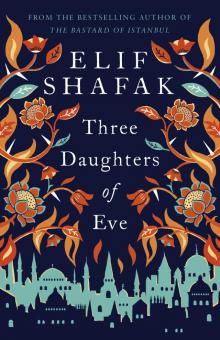 Three Daughters of Eve
Three Daughters of Eve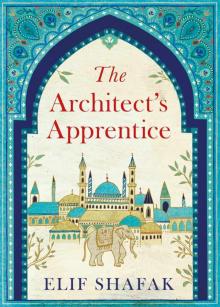 The Architect's Apprentice
The Architect's Apprentice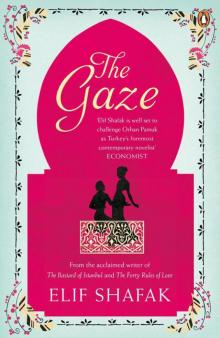 The Gaze
The Gaze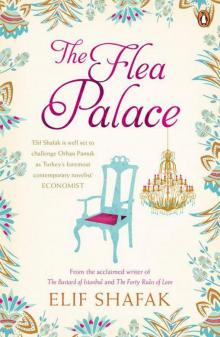 The Flea Palace
The Flea Palace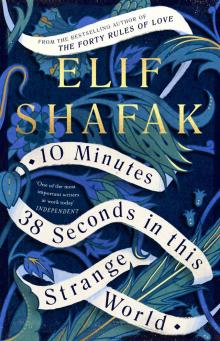 10 Minutes 38 Seconds in this Strange World
10 Minutes 38 Seconds in this Strange World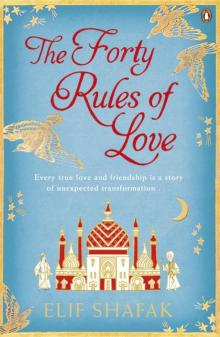 The Forty Rules of Love
The Forty Rules of Love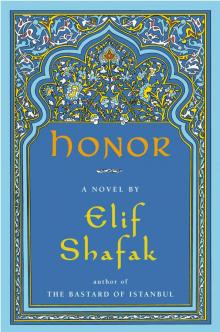 Honor
Honor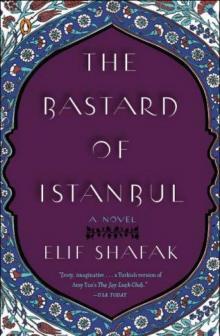 The Bastard of Istanbul
The Bastard of Istanbul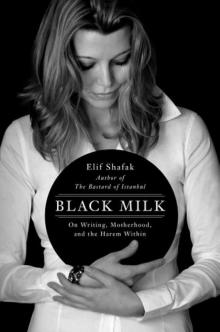 Black Milk
Black Milk The Happiness of Blond People (Penguin Specials)
The Happiness of Blond People (Penguin Specials)